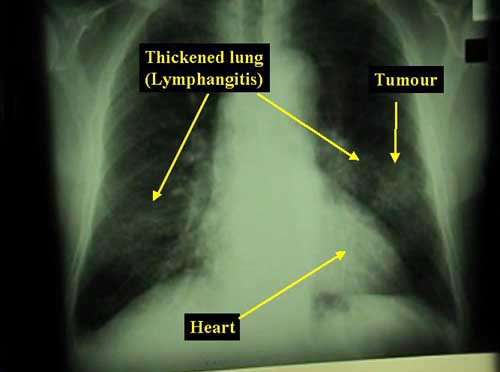 Lung cancer is the leading cause of cancer death in both men and women. Non- small cell lung cancer (NSCLC) is the most common type of lung cancer, representing more than 80% of lung cancer diagnoses.
Lung cancer is the leading cause of cancer death in both men and women. Non- small cell lung cancer (NSCLC) is the most common type of lung cancer, representing more than 80% of lung cancer diagnoses.Lung cancer is the leading cause of cancer death for both men and women, with an estimated 161,840 individuals expected to succumb to the disease in 2008 (Jemal et al., 2008). The general background information on lung cancer provided in this article is partially based on Walker (2003).
Lung cancer is divided into two major histologic types: non-small cell lung cancer (NSCLC) and small cell lung cancer.
Smoke from tobacco use accounts for about 80% of all deaths from lung cancer (Schrump et al., 2005). The U.S. Environmental Protection Agency (2007) has estimated that about 3,000 deaths from lung cancer per year are a result of secondhand smoke. Individuals with a history of chronic obstructive pulmonary disease also have an increased risk of developing lung cancer. The lower the forced expiratory volume in one second, the greater the risk of lung cancer.
Many newly diagnosed patients with lung cancer are former smokers. Smoking cessation is the key to preventing lung cancer. Patients who have been diagnosed with lung cancer yet continue to smoke should be encouraged to stop as well. Chemoprevention with antioxidants has been studied but, to date, no chemopreventive agents have been proven effective in preventing lung cancer. In fact, two studies initially revealed an increased risk of lung cancer in smokers who were supplemented with beta carotene.